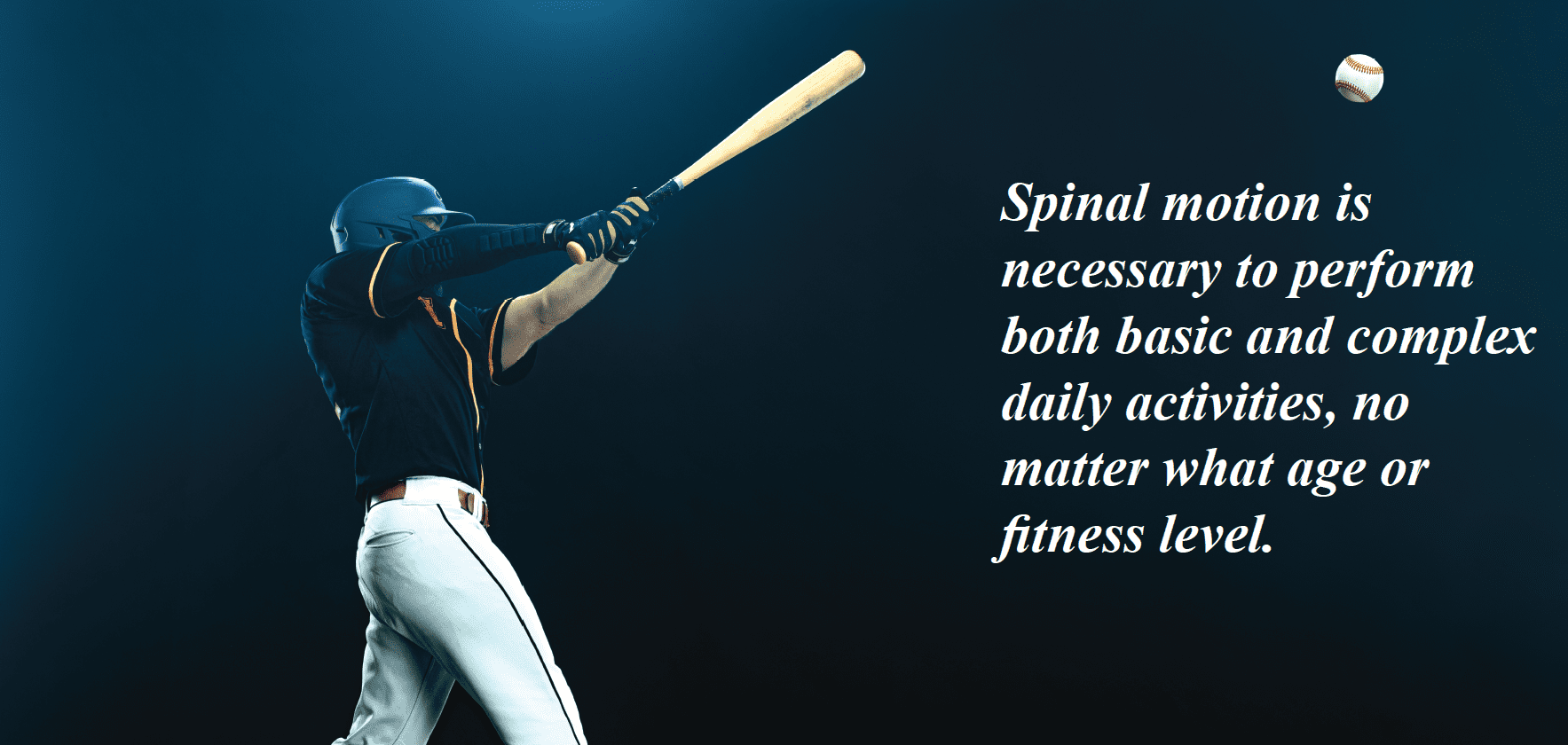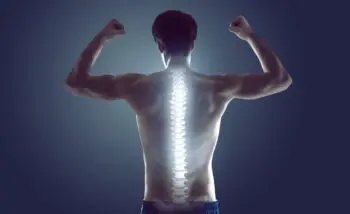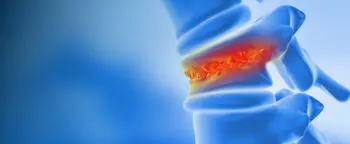A centerfielder hears the crack of the bat, then looks up to track and catch the baseball soaring through the air. A young mother responding to her crying newborn, leans over the crib to lift her crying infant up, who is instantly soothed by her embrace. A grandmother sees a package on her doorstep sent by her grandchildren, and bends over to pick it up to open a delightful birthday gift. All of these important actions involve motion of our bodies and of our spines. Spinal motion is central to our everyday lives and easy to take for granted. This article will begin to explore the significance of spinal motion.
The centerfielder is unknowingly employing the full range of motion of his cervical spine (neck) to track down that fly ball. He effortlessly looks up with the 70-80 degrees of extension inherent to his cervical spine and turns his head as he tracks down the baseball with up to 90 degrees of rotation on both sides. At his next at bat, his cervical spine can achieve 80-90 degrees of downward motion to keep his head flexed when he swings to drive the baseball into the outfield. In a similar manner, the young mother is using her 50 degrees of flexion along with 5 degrees of rotation inherent to her lumbar spine (low back) to bend over and pick up her crying infant. Likewise, the grandmother can retrieve her birthday present by bending at the waist using 48 degrees of spinal motion.
Whether catching a baseball, soothing a baby, or picking up a birthday gift off the ground, none of those activities would be possible without spinal motion. Spinal motion is necessary to perform both basic and complex daily activities, no matter what age or fitness level. Therein lies the importance of understanding spinal motion and the importance of preserving that motion throughout our lives. In this issue of The Spine Health Journal, each author will focus on the technology available today to ensure that the spine can continue to move throughout our lives.

The desire to preserve motion in the cervical and lumbar spine is not a recent aspiration. As early as 1966, Swedish surgeon Dr. Ulf Fernström recognized the importance of preserving motion and made the first attempt at spinal arthroplasty when he implanted a steel ball bearing in both the cervical and lumbar spinal regions. Remarkably, Fernström implanted 191 lumbar and 13 cervical steel ball bearings before it became apparent that preserving motion in the spine was more complex than placement of a sphere. While the Fernström ball was relegated to the dust heap of history, it was the opening salvo against fusion. Spinal fusion is a motion-eliminating surgery. Spine surgeons would spend the next several decades understanding spinal motion and continue to explore the biomechanics of the spine as they refined their understanding of alloys and polymers that would lay the path for modern day artificial discs.
The importance of spinal motion cannot be overstated and must be preserved when possible. Today, patients have several options for motion preservation in the lumbar and cervical spine. In 2024, we now have the benefit of almost 20 years of outcome data that compare motion preservation to fusion. There is one consistent theme that unsurprisingly surfaces across all studies regardless of arthroplasty device: preservation of motion results in the need for less surgery in the subsequent years and decades that pass. Spine surgeons are now being trained with a mentality that places motion preservation as a priority with a full armamentarium available to accomplish that goal. This journal issue will explore the various technologies that allow spine surgeons to preserve spinal motion, enabling that centerfielder, young mother, and grandmother to continue using the motions of the spine that make life worth living.
1) Swartz EE, Floyd RT, Cendoma M. Cervical spine functional anatomy and the biomechanics of injury due to compressive loading. J Athl Train. 2005 Jul-Sep;40(3):155-61. PMID: 16284634; PMCID: PMC1250253.
2) McGregor AH, McCarthy ID, Doré CJ, Hughes SP. Quantitative assessment of the motion of the lumbar spine in the low back pain population and the effect of different spinal pathologies of this motion. Eur Spine J. 1997;6(5):308-15. doi: 10.1007/BF01142676. PMID: 9391800; PMCID: PMC3454599.
3) Baaj AA, Uribe JS, Vale FL, Preul MC, Crawford NR. History of cervical disc arthroplasty. Neurosurg Focus. 2009 Sep;27(3):E10. doi: 10.3171/2009.6.FOCUS09128. PMID: 19722812.



